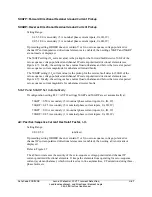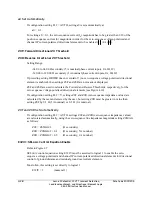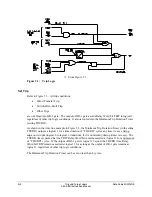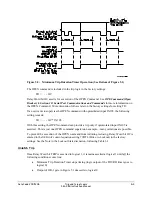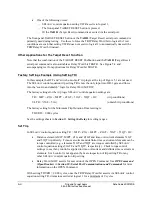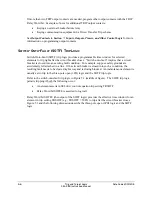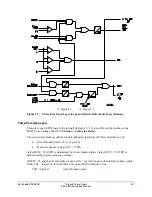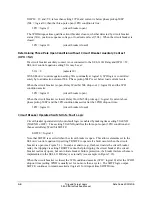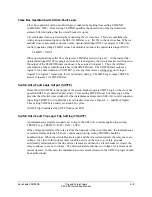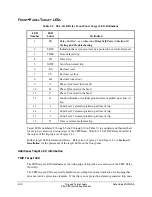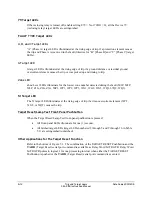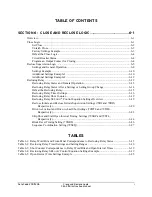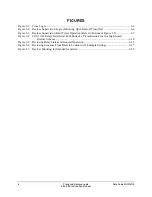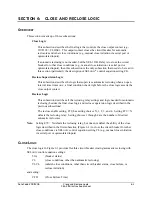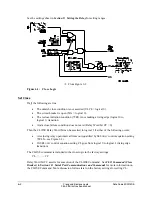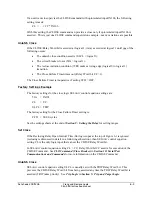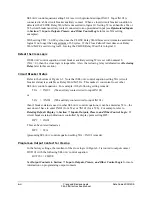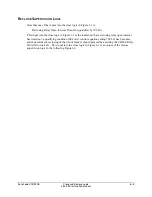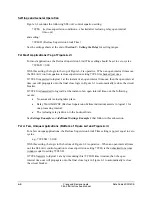
Date Code 20011205
Trip and Target Logic
5-9
SEL-311B Instruction Manual
Close Bus Operated Switch-Onto-Fault Logic
Close bus operated switch-onto-fault logic is enabled by making time setting CLOEND
(CLOEND
¹
OFF). Time setting CLOEND qualifies the deassertion of the load detection
element 50L (indicating that the circuit breaker is open).
Circuit breaker closure is detected by monitoring the dc close bus. This is accomplished by
wiring an optoisolated input on the SEL-311B Relay (e.g., IN105) to the dc close bus. When a
manual close or automatic reclosure occurs, optoisolated input IN105 is energized. SEL
OGIC
control equation setting CLMON (close bus monitor) monitors the optoisolated input IN105:
CLMON = IN105
When optoisolated input IN105 is energized, CLMON asserts to logical 1. At the instant that
optoisolated input IN105 is energized (close bus is energized), the circuit breaker is still open so
the output of the CLOEND timer continues to be asserted to logical 1. Thus, the ANDed
combination of these conditions latches in the SOTFD timer. The SOTFD timer outputs a
logical 1 for a time duration of “SOTFD” cycles any time it sees a rising edge on its input
(logical 0 to logical 1 transition), if it is not already timing. The SOTF logic output, SOTFE,
asserts to logical 1 for SOTFD time.
Switch-Onto-Fault Logic Output (SOTFE)
Relay Word bit SOTFE is the output of the circuit breaker operated SOTF logic or the close bus
operated SOTF logic described previously. Time setting SOTFD in each of these logic paths
provides the effective time window for the instantaneous elements in SEL
OGIC
control equation
trip setting TRSOTF to trip after the circuit breaker closes (see Figure 5.1—middle of figure).
Time setting SOTFD is usually set around 30 cycles.
A SOTF trip illuminates the SOTF front-panel LED.
Switch-Onto-Fault Trip Logic Trip Setting (TRSOTF)
An instantaneous element is usually set to trip in the SEL
OGIC
control equation trip setting
TRSOTF (e.g., TRSOTF = M2P + Z2G + 50P1).
If the voltage potential for the relay is from the line-side of the circuit breaker, the instantaneous
overcurrent element in the SEL
OGIC
control equation trip setting TRSOTF should be
nondirectional. When the circuit breaker is open and the line is deenergized, the relay sees zero
voltage. If a close-in three-phase fault condition exists on the line (e.g., safety grounds
accidentally left attached to the line after a clearance) and then the circuit breaker is closed, the
relay continues to see zero voltage. The directional elements have no voltage for reference and
cannot operate. In this case, the instantaneous overcurrent element in the SOTF trip logic should
be nondirectional.
Summary of Contents for SEL-311B
Page 6: ......
Page 8: ......
Page 10: ......
Page 24: ......
Page 26: ......
Page 122: ......
Page 124: ......
Page 138: ......
Page 168: ......
Page 172: ......
Page 254: ......
Page 282: ......
Page 306: ......
Page 348: ......
Page 364: ......
Page 366: ......
Page 448: ......
Page 460: ......
Page 466: ......
Page 476: ......
Page 482: ......
Page 494: ......
Page 500: ......
Page 522: ......
Page 526: ......
Page 528: ......
Page 534: ......
Page 536: ......
Page 550: ......
Page 570: ......
Page 586: ......
Page 600: ......

